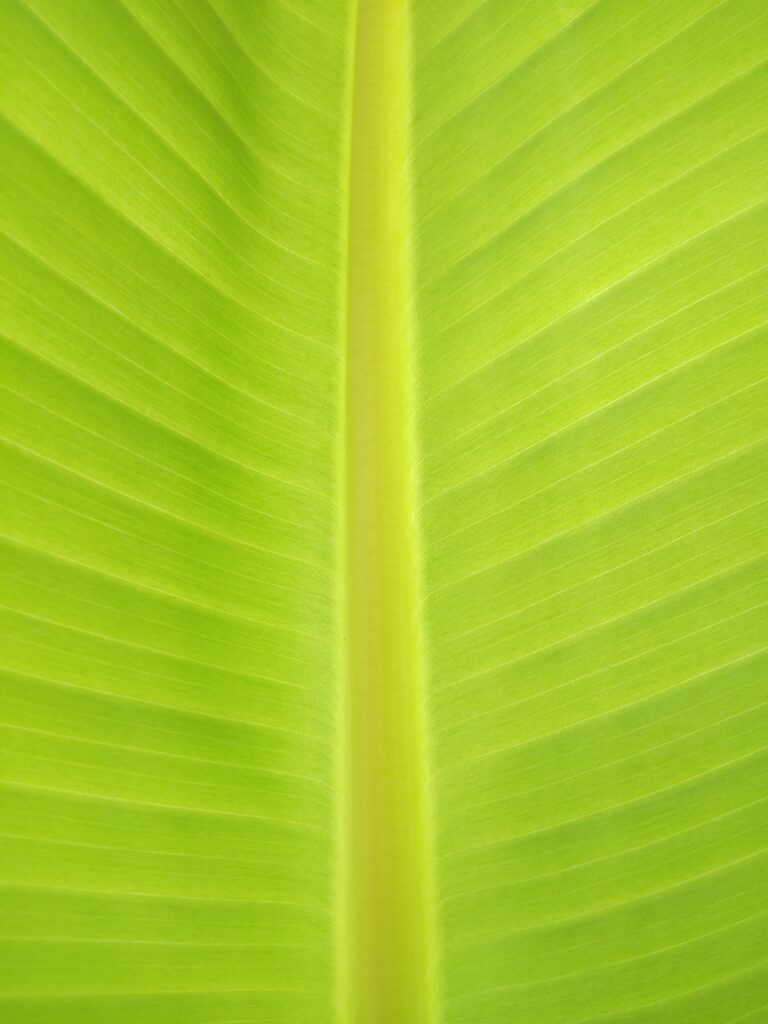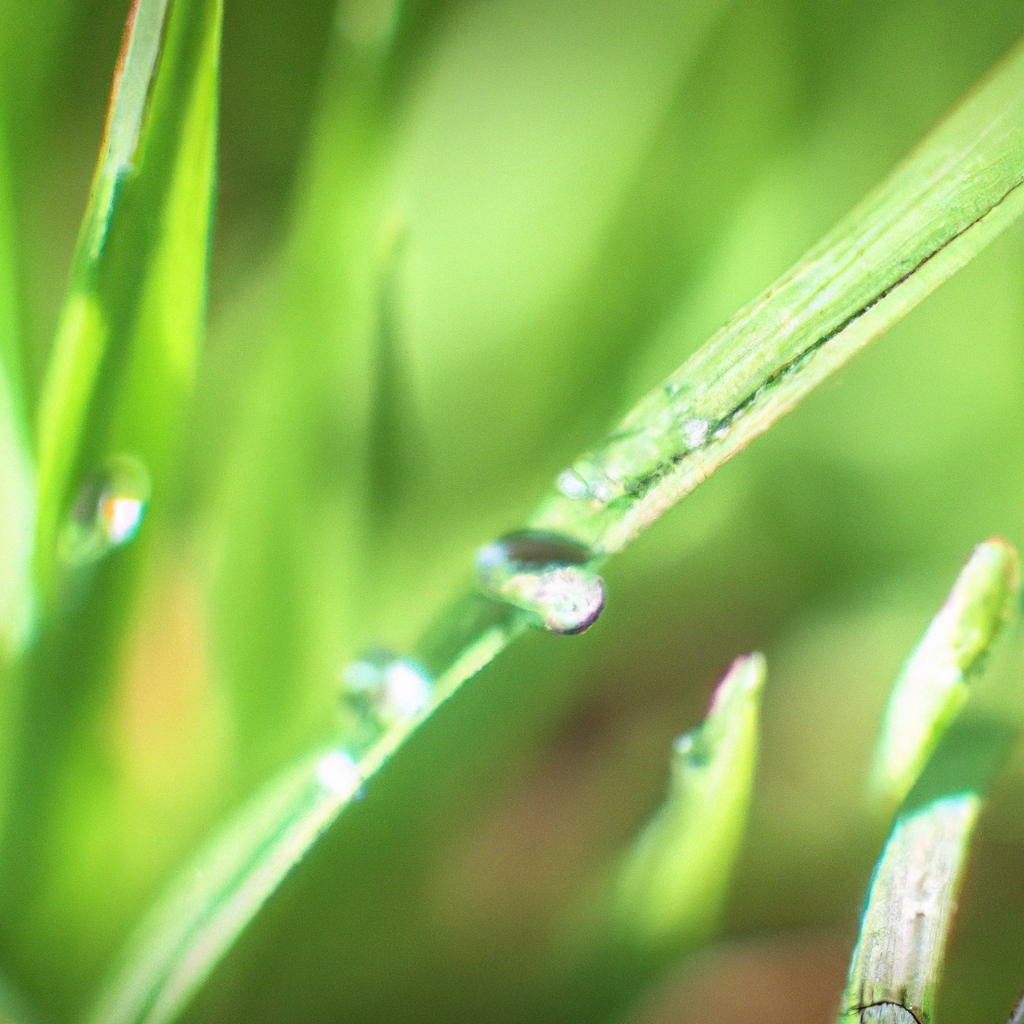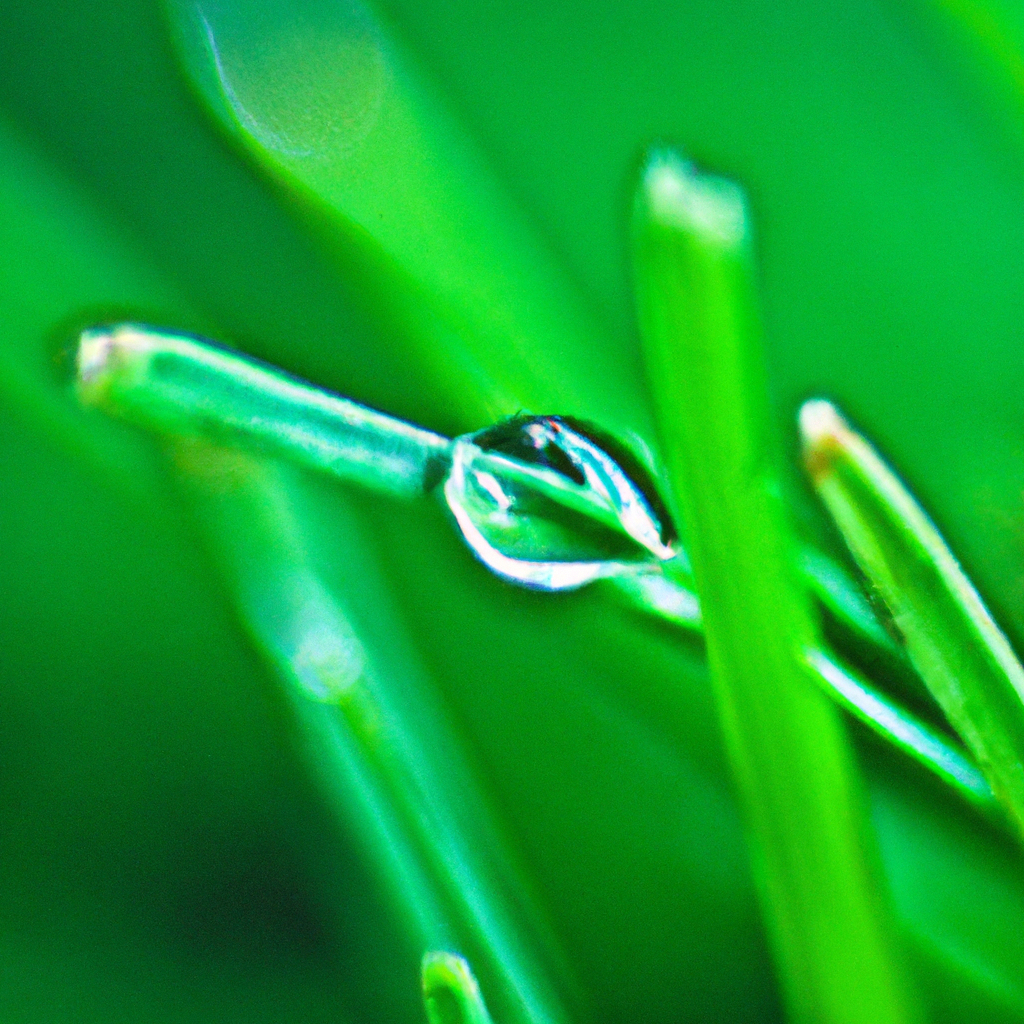Have you ever looked at a lush, vibrant green lawn and wondered what makes it so healthy and appealing? The answer lies in the science behind dark green grass and its ability to grow strong and lush. By understanding the factors that contribute to its vibrant color and impressive growth, you can take better care of your own lawn and achieve that coveted dark green hue. From proper lawn care techniques to the role of nutrients and sunlight, this article unravels the secrets behind dark green grass and how to achieve a healthier, more vibrant lawn.
The Role of Chlorophyll in Dark Green Grass
The Function of Chlorophyll in Plants
Chlorophyll is the pigment responsible for the green color in plants, particularly in grass. It plays a crucial role in photosynthesis, which is the process by which plants convert sunlight into energy. Chlorophyll absorbs light energy, primarily in the blue and red wavelengths, and uses it to power the production of carbohydrates and oxygen. Without chlorophyll, plants would not be able to carry out photosynthesis and produce the necessary nutrients for growth.
The Importance of Chlorophyll for Dark Green Grass
Chlorophyll is vital for maintaining the vibrant dark green color of grass. When chlorophyll molecules absorb light energy, they become highly energized. This energy is then used to facilitate the production of sugars and starches through photosynthesis. These compounds provide the necessary nutrients for grass growth and give it its rich green appearance. Additionally, chlorophyll molecules effectively scatter light, leading to increased light absorption and enhancing the overall greenness of the grass.
Nutrients Essential for Healthy Grass Growth
Nitrogen: Key Element for Dark Green Grass
Nitrogen is an essential nutrient for grass and plays a crucial role in achieving and maintaining a dark green color. Grass requires nitrogen to produce proteins, enzymes, and chlorophyll, which are all necessary for healthy growth. Nitrogen also helps stimulate leaf growth, making the grass appear lush and vibrant. A deficiency in nitrogen leads to yellowing of the grass blades and stunted growth. Therefore, proper nitrogen fertilization is essential for maintaining dark green grass.
Phosphorus and Potassium: Supporting Growth and Health
Phosphorus and potassium are two additional nutrients that are important for supporting the growth and overall health of grass. Phosphorus aids in root development, energy transfer, and nutrient uptake. Potassium, on the other hand, helps with disease resistance, drought tolerance, and overall stress management. Both these nutrients contribute to the overall vigor and dark green color of the grass.
Micronutrients: Vital for Optimal Grass Development
While macronutrients like nitrogen, phosphorus, and potassium are critical for grass growth, micronutrients are equally important. These include iron, manganese, zinc, copper, and boron, among others. Micronutrients play various roles, including enzyme activation, chlorophyll synthesis, and overall metabolic functions. Deficiencies in any of these micronutrients can lead to nutrient imbalances and impact the dark green color and health of the grass. Therefore, ensuring a well-balanced supply of these micronutrients through proper fertilization is crucial.

The Importance of Proper
Soil pH Levels
Effects of Soil pH on Grass Color
Soil pH, which measures the acidity or alkalinity of the soil, has a significant impact on the color of grass. Most grass species thrive in slightly acidic to neutral soil with a pH range of 6.0 to 7.0. When the soil pH deviates from this optimal range, it can affect nutrient availability and uptake by the grass. In alkaline soils, certain nutrients may become less accessible to the plant, leading to deficiencies and resulting in pale or yellow grass. On the other hand, highly acidic soils can cause nutrient toxicity and inhibit the grass’s ability to produce chlorophyll, resulting in a lighter green or even yellowish appearance.
Correcting Soil pH for Dark Green Grass
To ensure dark green grass, it is crucial to monitor and correct the soil pH if necessary. If the soil is too acidic, lime can be added to raise the pH. Conversely, if the soil is too alkaline, the addition of sulfur or acidic fertilizers can help lower the pH. Regular soil testing is recommended to determine the pH levels and make the necessary adjustments to create an optimal environment for dark green grass growth.
The Role of Sunlight in Grass Growth
Photosynthesis: The Process of Energy Production
Sunlight is a crucial factor in the growth and development of grass, primarily through the process of photosynthesis. During photosynthesis, chlorophyll molecules in the grass blades absorb light energy, which is then used to convert carbon dioxide and water into sugars and oxygen. These sugars provide the energy needed for growth and maintenance, while oxygen is released into the atmosphere. Without sufficient sunlight, grass cannot efficiently carry out photosynthesis, ultimately affecting its ability to produce the carbohydrates needed for dark green foliage.
Optimal Sunlight Exposure for Dark Green Grass
To achieve and maintain dark green grass, it is important to ensure that the grass receives adequate sunlight exposure. Most common grass species thrive in areas with at least six to eight hours of direct sunlight per day. Insufficient sunlight can lead to weak growth, pale coloring, and increased susceptibility to pests and diseases. To optimize sunlight exposure, it is essential to remove or trim any obstructions such as overhanging branches or tall plants that may shade the grass. Additionally, regular mowing at the appropriate height can help ensure that the grass blades receive adequate sunlight for photosynthesis.

Watering Techniques for Healthy Grass
The Relationship Between Water and Grass Growth
Water is a vital component for grass growth, as it helps facilitate various physiological processes. Grass uses water to transport nutrients from the soil to the different parts of the plant. Additionally, water is essential for maintaining turgidity in the grass blades, allowing for optimal photosynthesis. Proper watering promotes strong root development, which enhances grass health and its ability to absorb nutrients. However, overwatering can lead to waterlogged soil and suffocate the roots, while underwatering can cause stress and result in dry, brown grass.
Best Practices for Watering Dark Green Grass
To promote the dark green color and overall health of grass, it is important to follow proper watering techniques. The frequency and amount of water needed depend on factors such as soil type, grass species, weather conditions, and time of year. As a general guideline, it is recommended to water deeply and infrequently, allowing the soil to dry out slightly between watering sessions. This encourages the grass roots to grow deeper, making them more resilient and better able to access water and nutrients. Additionally, it is beneficial to water in the early morning or late afternoon to minimize evaporation and allow the grass blades to dry before evening, reducing the risk of disease.
Importance of Aeration for Healthy Grass
Understanding Soil Compaction and its Impact on Grass Health
Soil compaction occurs when the soil particles are pressed together, resulting in reduced pore space. This compression restricts the movement of air, water, and nutrients within the soil, adversely affecting grass health. Compacted soil prevents proper root development and limits the grass’s ability to absorb essential nutrients and oxygen. Additionally, compacted soil can lead to poor drainage, waterlogging, and increased susceptibility to diseases. Therefore, addressing soil compaction is crucial for promoting healthy, dark green grass.
Methods of Aerating Dark Green Grass
Aeration is the process of creating small holes or channels in the soil to alleviate compaction and improve air and water movement. There are two main methods of aerating grass: core aeration and spike aeration. Core aeration involves removing small cores of soil from the ground, allowing air, water, and nutrients to penetrate deeper into the soil. Spike aeration, on the other hand, involves poking holes into the soil using solid tines or spikes. Both methods have their advantages and should be carried out in accordance with the specific needs of the grass and the condition of the soil. Aeration should be done when the grass is actively growing, either in spring or fall, to maximize its benefits.

Mowing Practices for Dark Green Grass
Ideal Mowing Height for Dark Green Grass
Mowing height plays a significant role in maintaining a dark green and healthy lawn. The ideal mowing height varies depending on the grass species, but a general rule of thumb is to never remove more than one-third of the grass blade height at a time. Cutting the grass too short stresses the plant and can lead to weak growth, increased weed competition, and a thinner lawn. On the other hand, allowing the grass to grow excessively long before mowing can result in a messy appearance and reduced vigor. Adjusting the mowing height to the recommended range for the specific grass species is crucial for achieving and maintaining dark green grass.
Frequency and Timing of Mowing
In addition to mowing height, the frequency and timing of mowing also influence the health and appearance of the grass. It is generally advisable to mow the grass when it has grown to about one-third taller than the desired height. Mowing too frequently and removing minimal amounts of grass can stress the plant and inhibit healthy growth. Additionally, it is recommended to avoid mowing during periods of drought or extreme heat, as this can further stress the grass and hinder its ability to maintain a rich, dark green color. Mowing in the early morning or late evening when temperatures are cooler can also minimize stress on the grass.
Proper Mowing Techniques
Using proper mowing techniques is essential for promoting a dark green appearance and minimizing damage to the grass. Sharp mower blades should be used to ensure clean cuts and avoid tearing or bruising the grass blades. It is also beneficial to vary the mowing pattern each time to prevent the grass from leaning in one direction and potentially causing compaction. Grass clippings can be left on the lawn if they are of appropriate length and not excessively clumpy, as they can provide valuable nutrients and organic matter to the soil. However, if the clippings are too long or dense, they should be collected to prevent smothering the grass.
Importance of Fertilization for Grass Health
Choosing the Right Fertilizer for Dark Green Grass
Fertilization is an important aspect of promoting dark green grass and ensuring overall lawn health. Choosing the right fertilizer involves understanding the nutrient needs of the grass and soil. Fertilizers are typically labeled with a three-number ratio, indicating their nitrogen (N), phosphorus (P), and potassium (K) concentrations. For dark green grass, a fertilizer with a higher nitrogen content is generally recommended, as nitrogen promotes leaf growth and chlorophyll production. It is important to select a fertilizer that is specifically formulated for lawns and matches the nutrient requirements of the grass species. Soil testing can be helpful in determining any nutrient deficiencies and guiding fertilizer selection.
Proper Application and Timing of Fertilizer
Proper application and timing of fertilizer are key to maximizing its effectiveness and promoting dark green grass. Fertilizer should be spread evenly to ensure uniform nutrient distribution throughout the lawn. Following the recommended application rates specified on the fertilizer packaging is important to avoid overfertilization, which can lead to nutrient imbalances and potential damage to the grass. Timing-wise, it is best to fertilize in the early spring when the grass is actively growing and can readily uptake the nutrients. Additional applications may be needed during the growing season, depending on the grass’s needs and any nutrient deficiencies identified through soil testing.

Preventing and Controlling Lawn Pests and Diseases
Identifying Common Grass Pests and Diseases
Lawn pests and diseases can significantly impact the health and appearance of the grass, hindering its ability to maintain a dark green color. Identifying common pests and diseases is crucial for implementing appropriate prevention and control measures. Common pests that may infest grass include grubs, chinch bugs, sod webworms, and armyworms, among others. Diseases that can affect grass include fungal infections like brown patch and dollar spot, as well as viral and bacterial infections. Regular inspection of the lawn for signs of pest activity or disease symptoms, such as discolored patches, wilting, or unusual growth, can help identify and address issues promptly.
Integrated Pest Management for Optimal Grass Health
Integrated Pest Management (IPM) is an approach that emphasizes preventative measures and employs a combination of tactics to minimize pest and disease damage. This includes cultural practices such as proper watering, mowing, and fertilization, which promote grass health and resilience against pests and diseases. Additionally, IPM involves monitoring the lawn to detect early signs of pest or disease activity, allowing for targeted interventions if necessary. This may include the use of biological controls, such as beneficial insects or microorganisms, as well as the judicious use of pesticides when other methods are insufficient. Implementing IPM strategies can help maintain a dark green, pest-free lawn while minimizing the negative impacts on the environment.
Stress Management for Dark Green Grass
Recognizing and Addressing Environmental Stressors
Environmental stressors can impact the health and appearance of grass, making it more challenging to achieve and maintain a dark green color. These stressors may include extreme temperatures, drought, excessive shade, or poor soil conditions. Recognizing and addressing these stressors is crucial for promoting grass health. Implementing proper watering techniques, including deep and infrequent watering, can help mitigate the effects of drought. Pruning trees or plants to reduce shade and improve sunlight exposure can enhance the grass’s ability to carry out photosynthesis. In cases of poor soil conditions, amending the soil with organic matter or using appropriate fertilization techniques can help improve nutrient availability and soil structure.
Reducing Foot Traffic and Other Physical Stressors
Foot traffic and other physical stressors can negatively impact the health and appearance of grass, making it difficult to achieve and maintain a dark green color. Excessive or repetitive foot traffic can compact the soil, restrict air and water movement, and damage the grass blades. To minimize physical stress on the grass, it is advisable to designate specific pathways or areas for high foot traffic and consider alternative surfacing options in heavily used areas. Additionally, avoiding heavy machinery or equipment on the grass and implementing proper maintenance techniques, such as avoiding excessive thatch buildup or compaction, can contribute to dark green, healthy grass.
In conclusion, achieving and maintaining dark green grass requires a comprehensive understanding of the various factors that influence its growth and appearance. From the role of chlorophyll and essential nutrients to the impact of soil pH, sunlight, watering techniques, aeration, mowing practices, fertilization, pest and disease control, and stress management, each aspect plays a crucial role in promoting healthy, vibrant grass. By implementing proper techniques and strategies outlined in this article, you can enjoy a lush, dark green lawn that adds beauty to your outdoor space.

